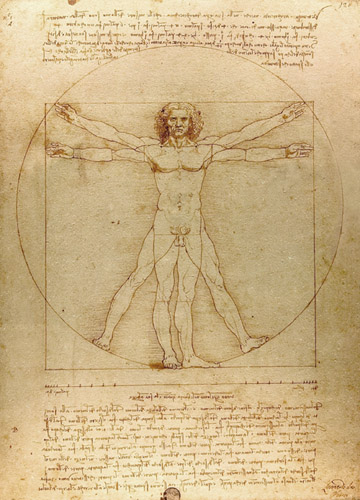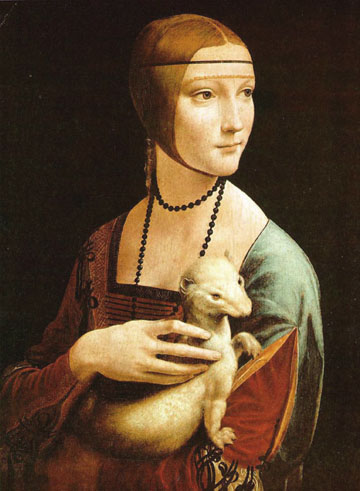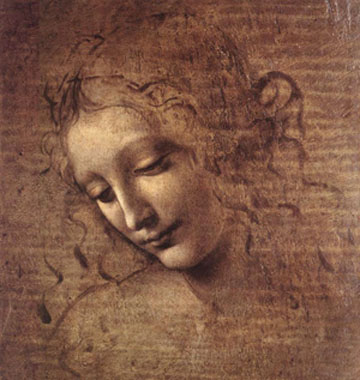Selected Works of Art of Leonardo da Vinci

The Vitruvian Man is a world-renowned drawing created by Leonardo da Vinci circa 1487. It is accompanied by notes based on the work of the famed architect, Vitruvius. The drawing, which is in pen and ink on paper, depicts a male figure in two superimposed positions with his arms and legs apart and simultaneously inscribed in a circle and square.

The small portrait generally called The Lady with the Ermine was painted in oils on wooden panel by Leonardo da Vinci. At the time of its painting, the medium of oil paint was relatively new to Italy, having been introduced in the 1470s. Leonardo was one of those artists who adopted the new medium and skillfully exploited its qualities. The sitter has been identified with reasonable security as Cecilia Gallerani who was the mistress of Leonardo's employer, Lodovico Sforza, known as Lodovico il Moro.
The painting shows a half-length figure, the body of the young woman who holds a small white-coated stoat, known as an ermine. Her dress is comparatively simple, revealing that she is not a noblewoman.

Among Leonardo’s many famous pieces of art, La Scapigliata (commonly referred to simply as Female Head ) is one that could be considered slightly unorthodox for its time. Critics argued that da Vinci was not simply sketching a woman with uncombed hair; instead, they suggest he was creating a work of art that depicts the natural beauty and power inherent in women. Leonardo da Vinci's La Scapigliata maintains a sense of equality between men and women in a time when such equality did not exist.

View of a Skull, c. 1489 from the collection of Her Majesty Queen Elizabeth II. In this drawing (on the reverse of a sheet with another drawing of a sectioned skull), Leonardo studies the position of the facial cavities in relation to the surface features, and in the left margin, in his typical mirror-writing, he discusses the form and number of teeth in the human jaw. In the late 1480s Leonardo conceived the idea of writing a treatise on anatomy. Initially he was hampered by a lack of material to dissect, but he was able to obtain one or more human skulls, and made a number of exquisitely detailed and accurate drawings of the sectioned skull on the pages of a small notebook.
“Simplicity is the ultimate sophistication.” ― Leonardo da Vinci



